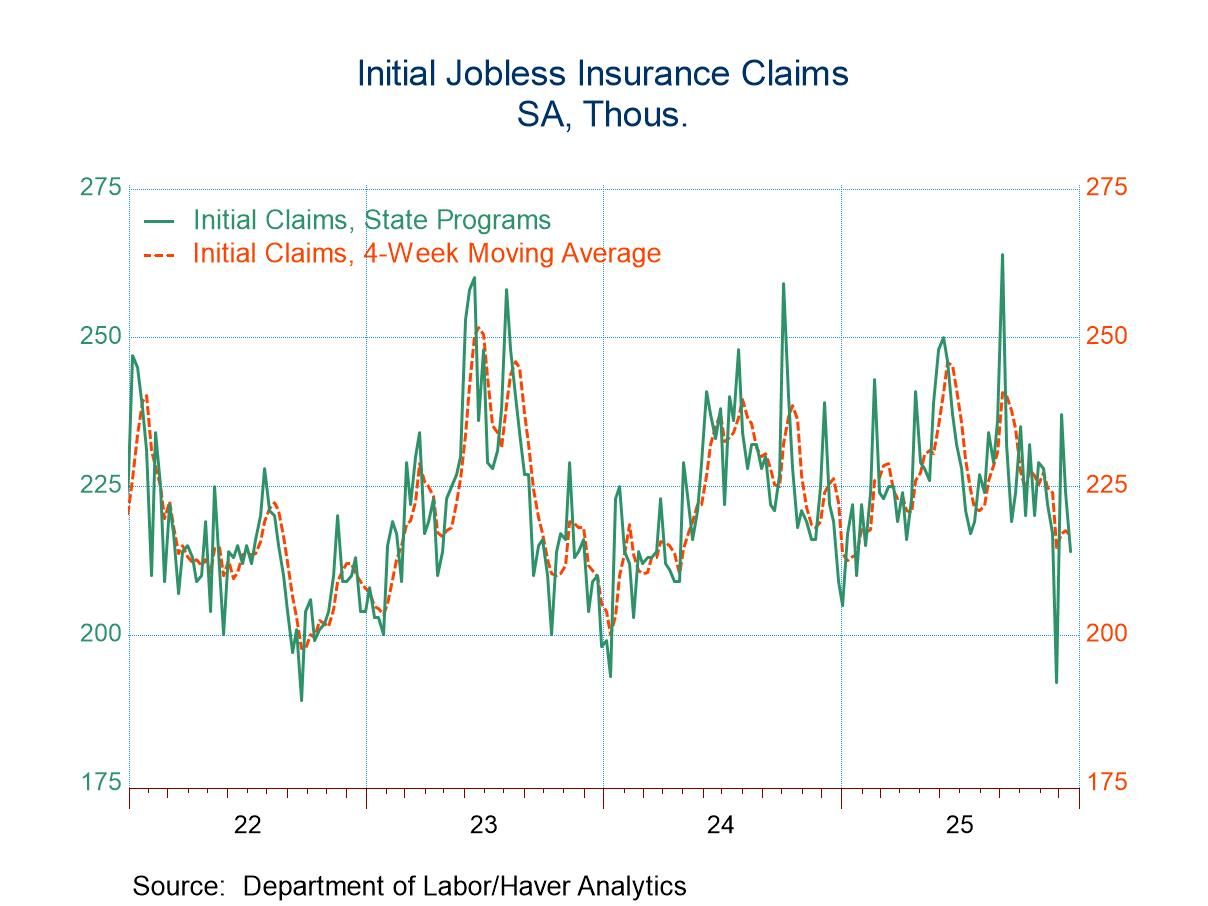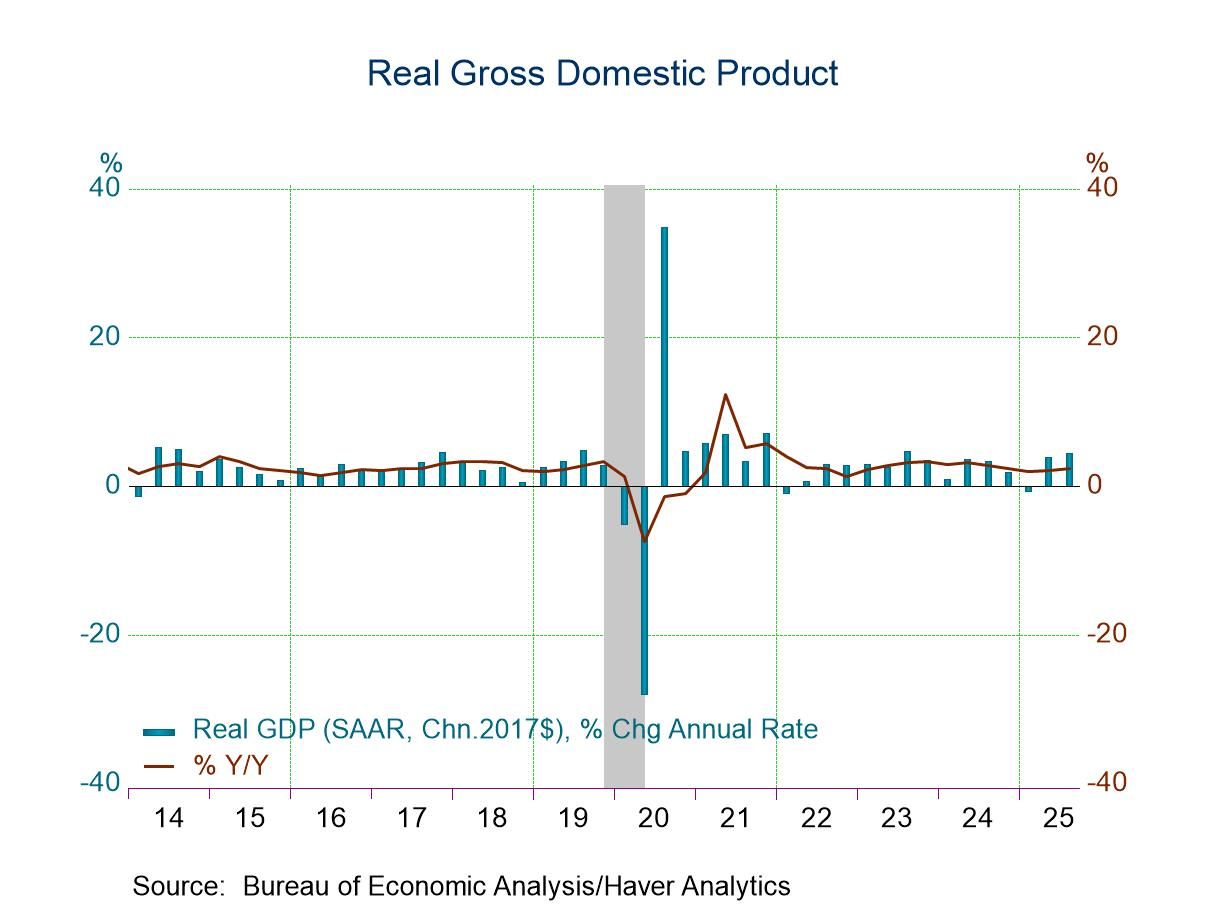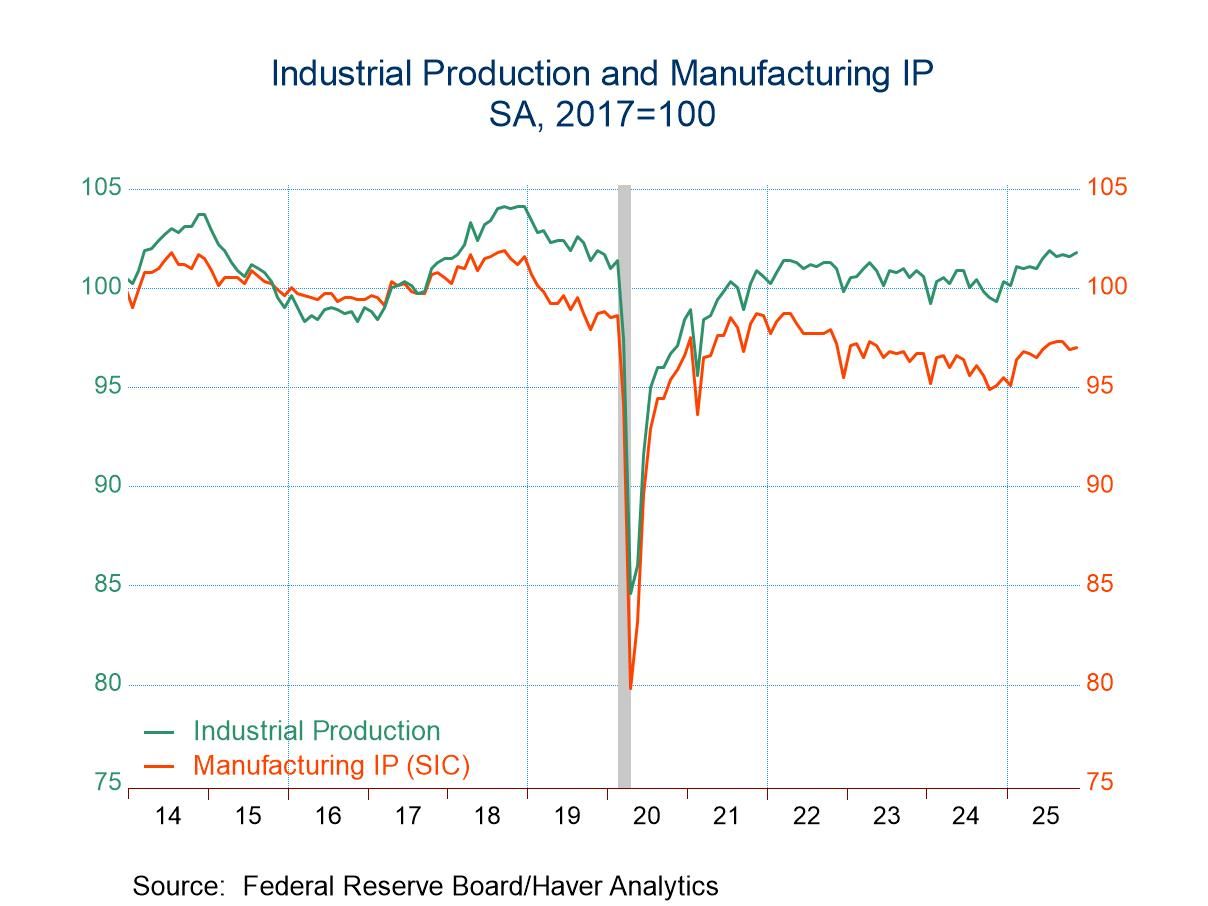U.S. Initial Claims for Unemployment Insurance Decline
by:Tom Moeller
|in:Economy in Brief
Summary
- Initial claims have trended lower since mid-January.
- Continued claims are little changed w/w.
- Insured unemployment rate remains at record low.


These latest readings paint a picture of labor market strength. Initial claims for unemployment insurance declined to 215,000 (-71.7% y/y) in the week ended February 26 from 233,000 in the previous week, revised from 232,000. The latest reading is down from 290,000 in the second week of January. The Action Economics Forecast Survey expected 226,000 claims for the latest week. The 4-week moving average of claims eased to 230,500 from 236,500 in the prior week.
In the week ended February 19, continuing unemployment insurance claims of 1.476 million (-66.3% y/y) compared to 1.474 million in the previous week, revised from 1.476 million. The latest reading remains the lowest level since early-1970.
The insured unemployment rate was unchanged at 1.1% in the week ended February 19. The reading ties a record low reached in the week ended January 1.
In the week ended February 12, the not seasonally adjusted total number of continuing weeks claimed in all programs fell to 1.971 million.
The state insured rates of unemployment in regular programs continued to vary. In the week ending February 12, the highest insured unemployment rates were in California (2.62%), Alaska (2.59%), New Jersey (2.47%), Rhode Island (2.41%), Minnesota (2.33%) and Illinois (2.13%). The lowest rates were in Virginia (0.20%), Alabama (0.24%), North Carolina (0.36%), Arizona (0.46%) and New Hampshire (0.48%). Other state insured rates of unemployment in regular programs include New York (2.23%), Pennsylvania (1.88%), Ohio (1.19%), Texas (0.88%) and Florida (0.48%). These state rates are not seasonally adjusted.
Initial claims for the federal Pandemic Unemployment Assistance (PUA) program, which expired on September 6, 2021, are no longer included in this report. Also, continued claims for both the PUA program and for Pandemic Emergency Unemployment Compensation are no longer reported as both programs have expired.
Data on weekly unemployment claims going back to 1967 are contained in Haver's WEEKLY database, and they are summarized monthly in USECON. Data for individual states are in REGIONW. The expectations figure is from the Action Economics Forecast Survey and is in the AS1REPNA database.


Tom Moeller
AuthorMore in Author Profile »Prior to joining Haver Analytics in 2000, Mr. Moeller worked as the Economist at Chancellor Capital Management from 1985 to 1999. There, he developed comprehensive economic forecasts and interpreted economic data for equity and fixed income portfolio managers. Also at Chancellor, Mr. Moeller worked as an equity analyst and was responsible for researching and rating companies in the economically sensitive automobile and housing industries for investment in Chancellor’s equity portfolio. Prior to joining Chancellor, Mr. Moeller was an Economist at Citibank from 1979 to 1984. He also analyzed pricing behavior in the metals industry for the Council on Wage and Price Stability in Washington, D.C. In 1999, Mr. Moeller received the award for most accurate forecast from the Forecasters' Club of New York. From 1990 to 1992 he was President of the New York Association for Business Economists. Mr. Moeller earned an M.B.A. in Finance from Fordham University, where he graduated in 1987. He holds a Bachelor of Arts in Economics from George Washington University.






